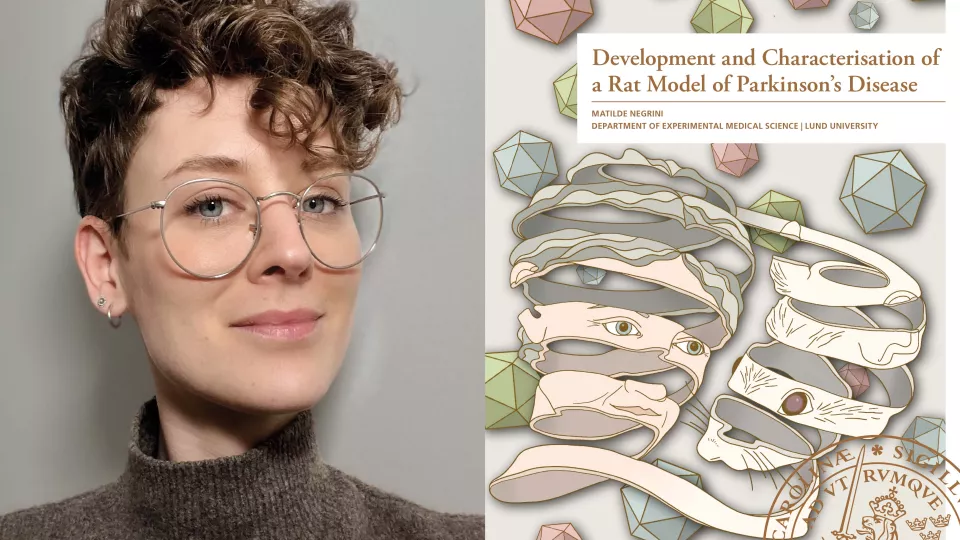Tell us about your research!
My project has been to develop and characterize a rat model of Parkinson’s disease based on the Parkinson’s-related protein alpha-synuclein. This model recapitulates some of the pathological hallmarks of the human condition, such as the loss of dopaminergic neurons and the development of behavioral deficits. Unfortunately, the outcomes of this model have varied since it had not yet been validated properly when I started my thesis work. My thesis sought to develop and characterize a rat model of PD based on the viral overexpression of alpha-synuclein. This model presents stable neurodegeneration and pathological accumulation of a-synuclein. Additionally, it develops motor and cognitive deficits that can be assessed by a wide battery of simple and complex behavioral tests.
Why is your project important? (What difference could it make for patients?)
To cure and treat Parkinson's, we need to know more about what goes wrong initially and how different pathological processes inside the brain correlate with symptoms. For this, we need good preclinical models of the disease. I don't believe there will be a model that fully mimics the human condition, so we need to develop a diversity of models recapitulating different aspects of the pathology. Together, they can be used to give us a more comprehensive picture. My PhD project contributed to the development of one of these models, which takes the a-synuclein pathology into account.
Can you tell us more about the cover of your thesis?
I drew it myself, inspired by Escher, a Dutch artist famous for his geometric paintings with impossible structures. In my cover, a woman and a rat are wired together so that they are united, and they symbolize the bond between preclinical and clinical research. The background is filled with viral capsids representing the viral vectors we used to deliver the genetic material into our rats to trigger pathology.
How did you end up at MultiPark?
I studied at the master's program in biotechnology in Italy and wanted to get abroad to experience an international environment, learn how to work with experimental animals, and improve my English. As I was already taking courses in neurobiology, the step was not that far to contact researchers at MultiPark as Lund University historically has a well-thought-of expertise in Parkinson's disease. Initially, I arrived at Maria Swanberg's Translational Neurogenetics group for a master's internship. Then I worked with Tomas Björklund in the Molecular Neuromodulation Laboratory under the wing of Andreas Heuer, who was eventually awarded the Vetenskapsrådet starting grant and offered me a PhD position in his lab.
What did you like the most during your thesis work at MultiPark?
Most of us defending now has been a bit unfortunate during our Ph.D. period because of the pandemic. Before that, when I came to MultiPark, I was surprised by all activities that were offered to students. There is not much budget in Italy for retreats, neuroscience days and lunch seminars. All these activities made me feel that I was part of a community, and it generally makes people more united. For a while, I also arranged social activities in the young MultiPark working group, and I have also been a Ph.D. student representative in the MultiPark board. Another thing that also has been valuable for my thesis work is the access to advanced equipment via MultiPark's platforms. This has opened up methodological possibilities in our project that would otherwise have been too expensive for a small lab.
What have been the most challenging during your Ph.D.?
When I started my Ph.D. project, it was just my supervisor and me. Therefore, setting everything up in the lab from scratch required some time that delayed the start of the lab work. Another stressful thing was that I didn't get my first paper as a first author until this year. This was mainly because the project was expanded over the years, and the revision process took longer than expected. Fortunately, all went well in the end.
And the most rewarding?
During my thesis work, I supervised several students. It was a great pleasure to share what I have learned and eventually see their results and professional development. Even if it might seem time-consuming initially, it is very rewarding to see them becoming independent and confident in executing the experiments themselves.
What are you most proud of?
My first-author paper! And to know that I have done almost every single step of it myself. Of course, I was always supported by my supervisor, students, and collaborators, but I feel that it was the project where there was most of myself in it.
What do you like to do when you are not at work?
I enjoy playing board games with friends and going hiking, especially canoeing in the Ivö lake is fantastic. Drawing is also something I find relaxing. It is important to have things to cope with work-life stress and balance it regularly. In the beginning of my Ph.D., I spent too much time physically at the BMC (biomedical center). Then, I realized that it is essential for long-term sustainability to take breaks and recover between working days and weeks.
What advice do you want to give to new Ph.D. students?
Take all occasions to network! In the beginning, I was quite shy, but I learned how important it is to build your network and establish collaborations if you want to pursue a scientific career. Research is all about teamwork. For example, apply for travel grants, visit conferences, and attend seminars.
What happens after your defence?
I am considering jobs outside academia, but right now, I am not sure about exactly how my future will be. For example, I like structure and putting things in order, which can be useful skills in many positions. Maybe I should look for a more administrative position where I can manage and structure projects more. But first I need some holidays to relax after these intense four years.












